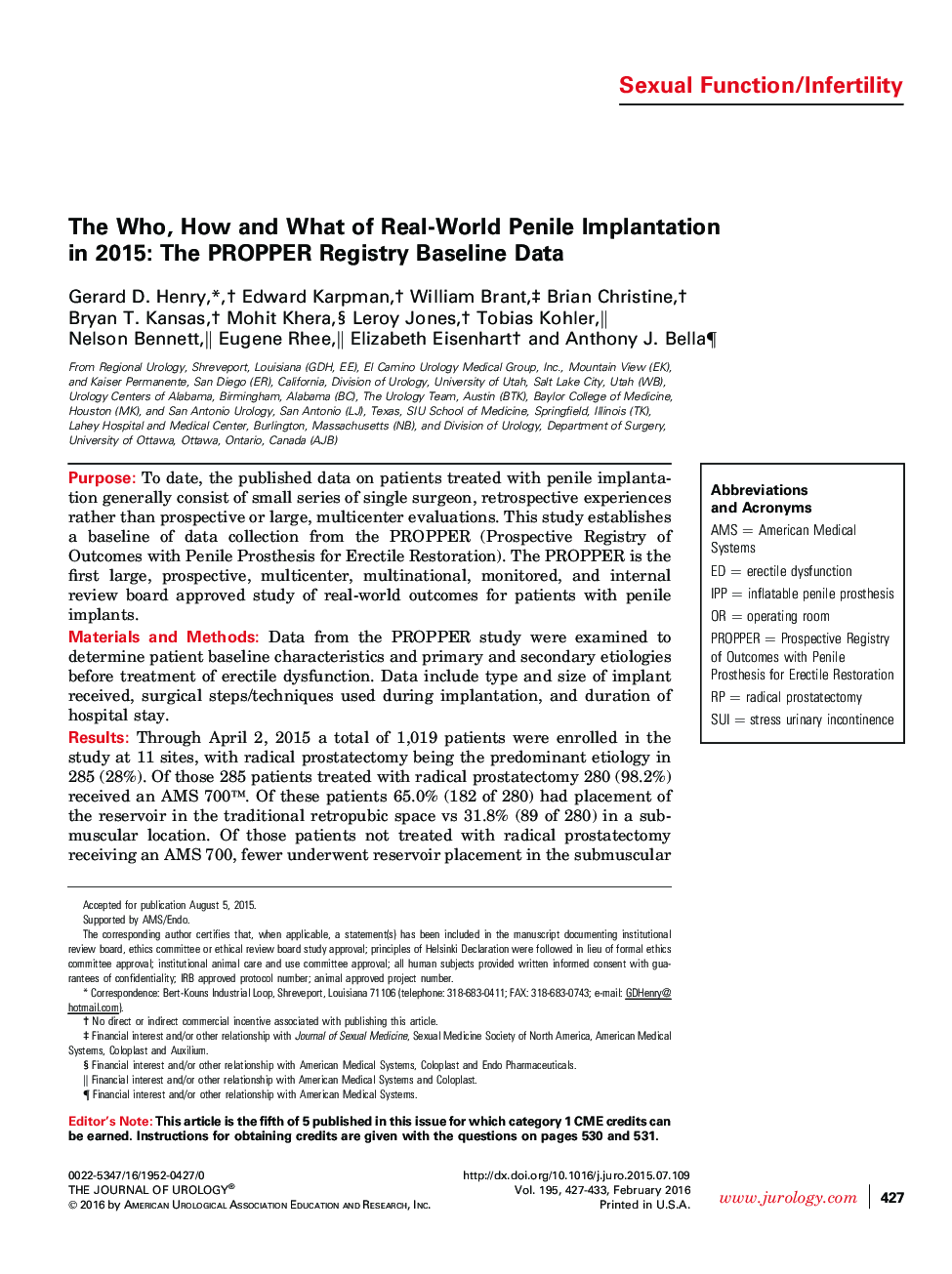| Article ID | Journal | Published Year | Pages | File Type |
|---|---|---|---|---|
| 3858384 | The Journal of Urology | 2016 | 7 Pages |
PurposeTo date, the published data on patients treated with penile implantation generally consist of small series of single surgeon, retrospective experiences rather than prospective or large, multicenter evaluations. This study establishes a baseline of data collection from the PROPPER (Prospective Registry of Outcomes with Penile Prosthesis for Erectile Restoration). The PROPPER is the first large, prospective, multicenter, multinational, monitored, and internal review board approved study of real-world outcomes for patients with penile implants.Materials and MethodsData from the PROPPER study were examined to determine patient baseline characteristics and primary and secondary etiologies before treatment of erectile dysfunction. Data include type and size of implant received, surgical steps/techniques used during implantation, and duration of hospital stay.ResultsThrough April 2, 2015 a total of 1,019 patients were enrolled in the study at 11 sites, with radical prostatectomy being the predominant etiology in 285 (28%). Of those 285 patients treated with radical prostatectomy 280 (98.2%) received an AMS 700™. Of these patients 65.0% (182 of 280) had placement of the reservoir in the traditional retropubic space vs 31.8% (89 of 280) in a submuscular location. Of those patients not treated with radical prostatectomy receiving an AMS 700, fewer underwent reservoir placement in the submuscular location (17.7%, 124 of 702, vs 80.9%, 568 of 702; p <0.001). Of those patients receiving an AMS 700, those treated with radical prostatectomy and those with diabetes had more outpatient admissions (less than 24 hours, 56.8% and 52.1%, respectively) compared to those with cardiovascular disease and Peyronie’s disease (42.0% and 35.6%, respectively, p <0.001).ConclusionsThis first-of-its-kind, large, prospective, multicenter study reveals most penile implant cases in North America receive an inflatable penile prosthesis and that radical prostatectomy is the most common primary etiology of penile implant surgery. Moreover, patients treated with radical prostatectomy were more likely to have the reservoir placed in a submuscular location, have a longer operating room time and be admitted to the hospital overnight compared with other patient groups.
